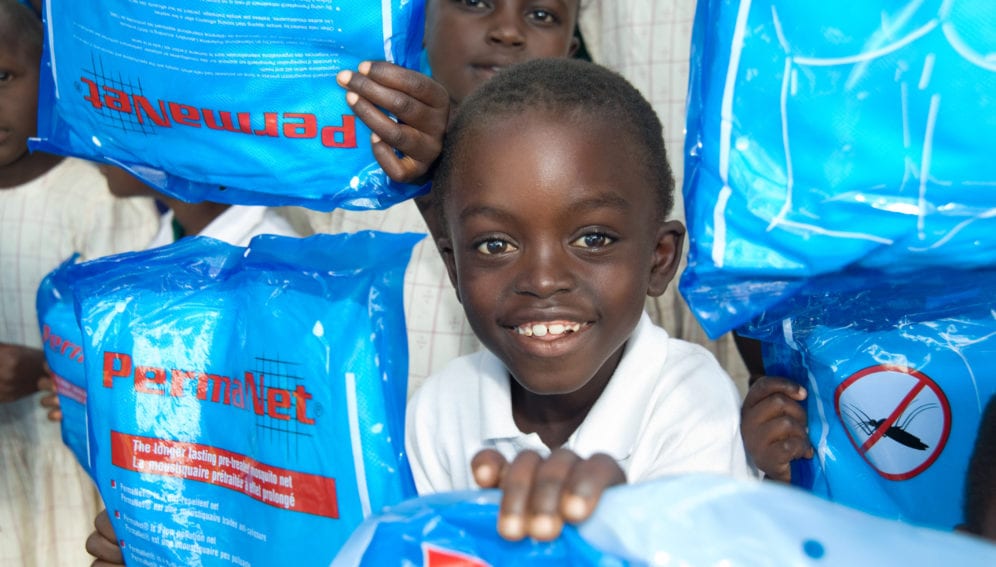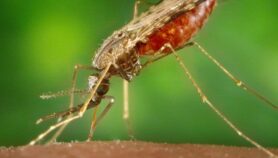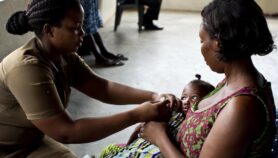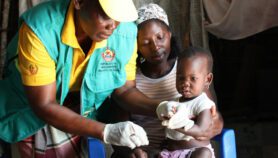18/07/19
Outdoor mosquitoes ‘raise malaria cases by 11 million’

By: Gilbert Nakweya
Send to a friend
The details you provide on this page will not be used to send unsolicited email, and will not be sold to a 3rd party. See privacy policy.
[NAIROBI] Outdoor mosquito bites – also known as residual malaria transmission – could become a serious challenge to malaria control and elimination across Africa, a study says.
This, according to the study, will make it necessary to augment indoor control measures such as treated bed nets and spraying insecticides with interventions that target the mosquito and the parasite outside the homes.
The WHO estimates of 2017 show that 93 per cent of malaria deaths occurred in Africa. Using treated bed nets and insecticides indoors has averted 68 and ten per cent of clinical cases of malaria respectively, the study adds.
But researchers who conducted the study published in the Proceedings of the National Academy of Sciences this month (8 July) say that in areas where everyone use bed nets and insecticides indoors, mosquito bites that occur outdoors persist although the scale of the problem remains unclear.
“We wanted to understand how differences in mosquito activity and human activity change the risk of being bitten,” says Ellie Sherrard-Smith, the study’s lead author and an epidemiologist at the UK-based Imperial College London. “This can help identify where other public health interventions could be most beneficial.”
“We wanted to understand how differences in mosquito activity and human activity change the risk of being bitten.”
Ellie Sherrard-Smith, Imperial College London
Researchers analysed both published and unpublished data to identify indoor and outdoor hourly activity time of three mosquito species — Anopheles gambiae, Anopheles arabiensis, and Anopheles funestus — across Sub-Saharan Africa from 2003 to 2018. They quantified the risk of mosquito bites indoors and outdoors for communities in various countries in Sub-Saharan Africa even when indoor interventions were maximised.
“In total across Africa, given a scenario with maximal vector control, ten per cent higher outdoor biting is predicted to result in an estimated 10.6 million additional malaria cases… a 58.2 per cent increase in malaria cases a year,” says the study. “Residual transmission is likely to become a principal challenge to malaria control and elimination.”
The study suggests that indoor control strategies will be more effective in countries with low outdoor biting such as Ghana, Liberia and Zimbabwe than in others including Burkina Faso, Eritrea and Ethiopia with high outdoor biting mosquito activities.
Sherrard-Smith tells SciDev.Net that it is important for policymakers to understand patterns of exposure to mosquito bites so that they can introduce alternative outdoor control strategies.
For instance, educating the local communities to remove and kill mosquito larvae from any water puddles or tanks in or around the home could help reduce the numbers of outdoor mosquitoes and subsequently reduce infectious bites on people.
She also suggests rapid access to malaria treatment and use of new technologies such as spatial repellents that emit vapours that frustrate mosquitoes.
Simon Kariuki, head of the malaria programme at the Kenya Medical Research Institute’s Centre for Global Health Research, says that although there are estimates of between five and 40 per cent of outdoor mosquito biting, malaria burden in Africa will depend to a large extent on mosquito resistance to insecticides.
“The good news is that there are a new generation of insecticides that mosquitoes have not developed resistance to,” Kariuki tells SciDev.Net, adding that because the malaria burden has been reducing over the last 20 years in many countries in Africa such as Kenya, it could imply that residual transmission is not a big problem at the moment.“But we should continue monitoring it [residual transmission] especially when targeting malaria elimination,” he says.
Kariuki adds that scaling up indoor control methods can also result in a change in the time that mosquitoes bite people and compromise control efforts.
“They can start biting early in the evening before people sleep under bed nets,” he explains.
This piece was produced by SciDev.Net’s Sub-Saharan Africa English desk.
*Correction:
*The opening sentence of this news article was changed on 24/07/2019 to accurately summarise the most important aspects of the study.
References
Ellie Sherrard-Smith Mosquito feeding behavior and how it influences residual malaria transmission across Africa (Proceedings of the National Academy of Sciences, 8 July 2019)













